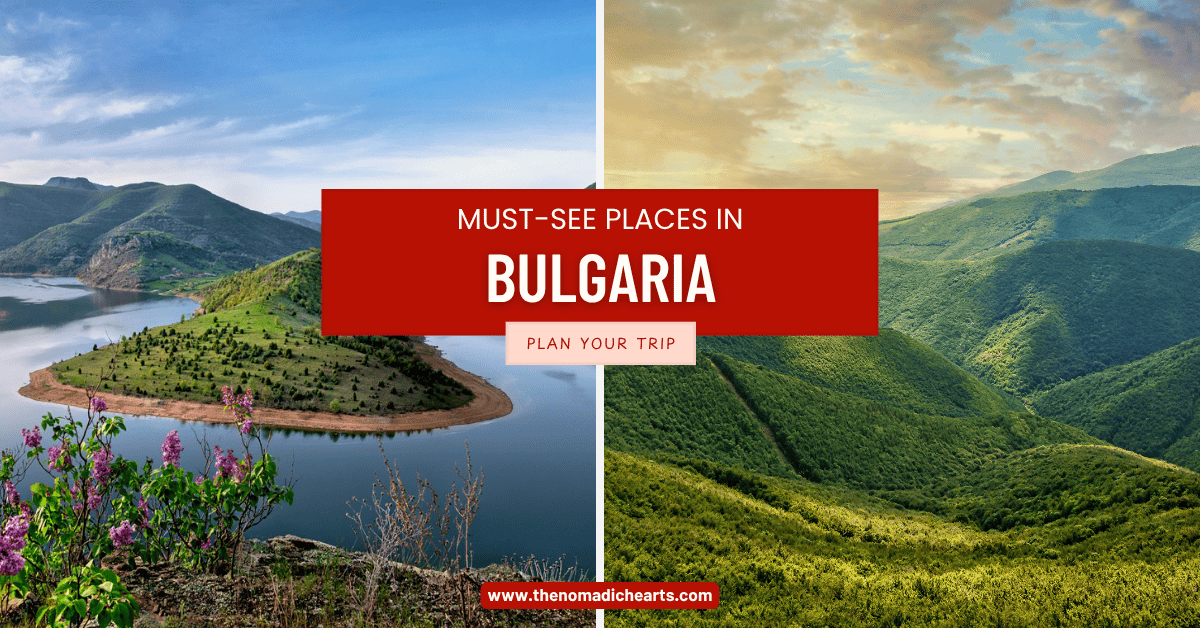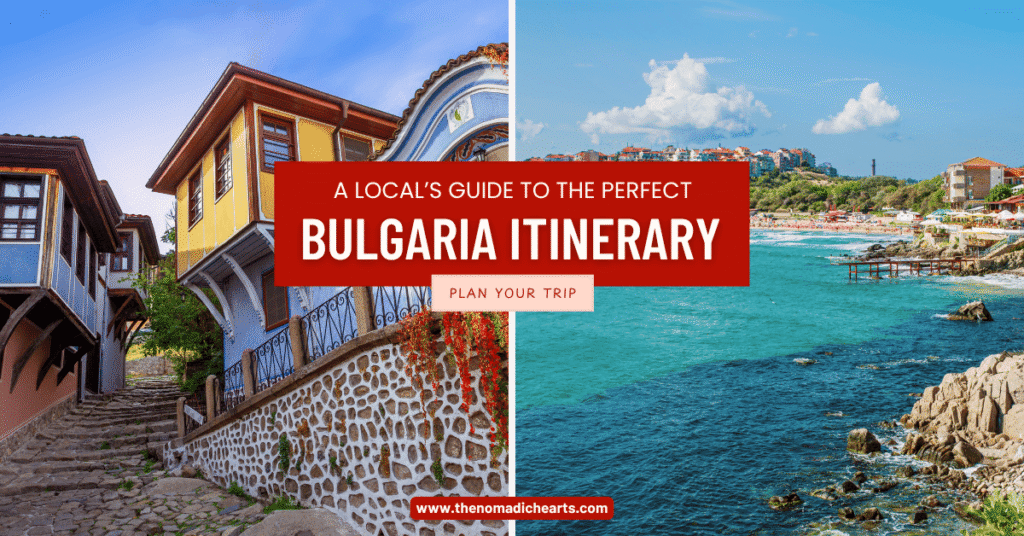If you’re wondering about the best things to do in Bulgaria, you’re in for a treat. This Balkan gem is small but full of surprises: towering mountains where you can hike in summer and ski in winter, golden sandy beaches on the Black Sea, ancient towns straight out of history books, and natural wonders you won’t see anywhere else in Europe.
As a Bulgarian, I know the country often gets overlooked compared to Greece or Croatia, but trust me – Bulgaria offers just as much, with fewer crowds and much better prices. Let’s dive into the best things to do in Bulgaria, with all the tips you’ll need to make the most of your trip.
*Heads up, fellow travelers! Some of the links on this site are affiliate links, which means if you make a purchase or book an activity through them, we may earn a small commission (at no extra cost to you!). We only recommend things we absolutely love and believe will enhance your adventure. Your support helps us keep this site going, so thank you for being part of our journey!
Practical Tips for Traveling in Bulgaria
Before we explore the highlights, here are some things you should know to make your trip smooth:
- Currency: Bulgaria uses the Lev (BGN). 1 EUR ≈ 2 BGN. The switch to the Euro is expected in 2026.
- Transport:
- Trains are very cheap and scenic but often slow and a bit outdated. Good for short trips, not ideal for long distances.
- Buses are the main way locals travel. Union Ivkoni and Biomet are the most reliable companies. Always book in advance in summer. You can also check out Omio for more variety of bus companies and full schedules.
- Car rental is the easiest way to explore. Roads are generally fine, but drive carefully – Bulgarians can be “creative” behind the wheel. Parking outside Sofia and Varna is usually cheap or free.
We’ve personally used DiscoverCars several times, and they’ve been one of the most reliable platforms we’ve tried – they compare prices from trusted rental companies across Bulgaria and always offer some of the most competitive deals.
- Cash is king: You can pay by card in most cities, but in small towns, mountain huts, markets, or seaside villages, cash is a must.
- Tap water: Safe to drink but has a strong mineral taste. Most locals stick to bottled water.
- Pickpocketing: Especially in Sofia’s public transport and busy tourist spots. Keep your valuables safe.
For peace of mind while traveling, we always use World Nomads — their insurance covers medical emergencies, lost luggage, trip cancellations, and even adventure activities, and we’ve been super happy with how easy and reliable they are.
- Best time to visit:
- Language: Bulgarian (Cyrillic alphabet). Younger people speak English, but older generations may not.
👉 Local tip: Don’t be surprised if Bulgarians shake their head for “yes” and nod for “no.” It’s the opposite of most countries!
Sofia and Around the Capital
Most travelers start their Bulgarian adventure in Sofia – and even though many see it as just a quick stop before heading to the mountains or the coast, the capital has a lot more to offer. It’s a city where history and modern life blend effortlessly – golden-domed churches, lively cafés, and mountain trails just half an hour away.

- Alexander Nevsky Cathedral – The city’s proudest landmark and one of the largest Orthodox cathedrals in the world. Its golden domes shine at sunset, and inside, the frescoes and icons are absolutely stunning.
- National Palace of Culture (NDK) – Once a symbol of communist power, now one of the city’s busiest cultural hubs. The surrounding park is full of fountains, art, and locals on their evening walks.
- Vitosha Boulevard – Sofia’s main shopping street lined with restaurants, bars, and street performers. It’s the best place to feel the city’s energy (and people-watch for hours!).
- Boyana Church – A small medieval church on the slopes of Vitosha Mountain, famous for its frescoes from the 13th century that revolutionized European art.
- Boyana Waterfall – Just above the church, you’ll find a peaceful forest trail leading to the waterfall. It’s an easy hike for anyone who wants a break from the city noise.
- Vitosha Mountain – Only 30 minutes from the city center, Vitosha is Sofia’s natural playground. You can hike in summer, ski in winter, or visit the Dragalevtsi Monastery hidden in the forest.
- Roman Ruins – Sofia sits on ancient Roman foundations, and right next to the Serdika metro station, you can literally walk through the remains of the old Roman city.
👉 Local tip: Sofia is best explored on foot. Join a free walking tour – they’re fun, run daily, and give you tons of insider stories.
👉 Want to explore Sofia in detail? Check out our full guide on What to Do in Sofia in 2025 – packed with insider tips, local food spots, and hidden gems you won’t find on Google.
Day Trips from Sofia
If you have an extra day or two, Sofia is the perfect base for exploring some of Bulgaria’s most famous landmarks.
- Rila Monastery – The country’s most iconic monastery, painted in bright colors and surrounded by mountains. It’s about a 2-hour drive from Sofia and easily reachable by car or organized tour.
- Seven Rila Lakes – A dream for nature lovers! Take the lift from Panichishte and spend a few hours hiking between glacier lakes with unforgettable views.
- Plovdiv – Bulgaria’s second-largest city, just 2 hours away. Known for its Roman amphitheater, colorful old town, and creative Kapana district full of cafés and street art.



How long to stay:
2–3 days in Sofia is perfect for exploring the city, and if you add Rila or Plovdiv, plan for 4–5 days total.
Where to stay:
Base yourself in central Sofia, near Serdika metro station or Vitosha Boulevard – that way, you’ll be within walking distance of everything.
Here are some of the best-rated hotels in Sofia on Booking.com – from budget-friendly stays to mid-range comfort and luxury escapes, all in great central locations.
Budget-Friendly:
- Hostel N1 (~15€/night per person) – 4- & 6-Bed Dormitory Rooms
- Generaator Sofia (~40€/night for 2 people) – double rooms
- Visito Aparthouse (~40€/night for 2 people) – double/family rooms and apartments
Mid-Range:
- Art Hotel 158 (~70€/night for 2 people) – double rooms
- Courthouse Apartments Slavi (~73€/night for 2 people) – double rooms and apartments
- M star rooms (~90€/night for 2 people) – recently renovated rooms and apartments
Luxury:
- Florence family 2BDR Apt (~130€/night) – apartment with two bedrooms and a living room
- LOCATION (~123€/night) – family rooms
- Arte Sofia Hotel (~100€/night for 2 people) – stylish rooms for business and leisure guests
Central Bulgaria – History and Mountains
If you love history, mountain views, and charming old towns, Central Bulgaria is the perfect mix. This part of the country is where Bulgaria’s past truly comes to life – from medieval fortresses to villages frozen in time. It’s also full of fresh mountain air, great local food, and friendly guesthouses.
👉 Best tips: The easiest base is Veliko Tarnovo – everything is within 1–1.5 hours by car from there. Roads are winding but scenic, so driving is best. Most places accept cards, but keep some cash for small shops or entry tickets.
Veliko Tarnovo
Once the medieval capital of Bulgaria, Veliko Tarnovo is built over dramatic hills split by the Yantra River – one of the most photogenic towns in the Balkans. The highlight is Tsarevets Fortress, where the old royal palace stood, and the evening light show is absolutely worth seeing.

You can easily reach Tarnovo by bus from Sofia (3–4 hours) or drive via the scenic Balkan route. Stay close to the Old Town or in the Asen quarter for the best views. Two full days here are perfect to explore at a relaxed pace.
There is also the option to book a fully planned one day trip from Sofia:
Arbanasi
Just a 10-minute drive from Veliko Tarnovo, this small village is like a time capsule of the Bulgarian Revival era. You’ll find beautifully preserved stone houses, tiny churches with frescoes, and quiet cobbled streets. It’s ideal for an afternoon visit, and taxis or local minibuses can take you there. For a cozy stay, try one of the traditional guesthouses overlooking the valley.

Etar Open-Air Museum
Near Gabrovo, about an hour from Tarnovo, Etar is a living museum where craftsmen still work in restored 19th-century houses. You can watch wood-carving, pottery, or try homemade bread straight from a wood-fired oven. It’s open year-round, and easy to reach by car or taxi from Gabrovo. Spend half a day here – it’s one of those slow-travel experiences you’ll actually remember.

Shipka Pass & Monument
High in the Balkan Mountains, Shipka is both a scenic drive and a historical site. The monument honors Bulgaria’s independence battles and offers 360° views that make the climb worth it. It’s about 40 minutes from Veliko Tarnovo by car. Stop at Shipka Church on the way – it looks like something straight out of a fairy tale with its golden domes.
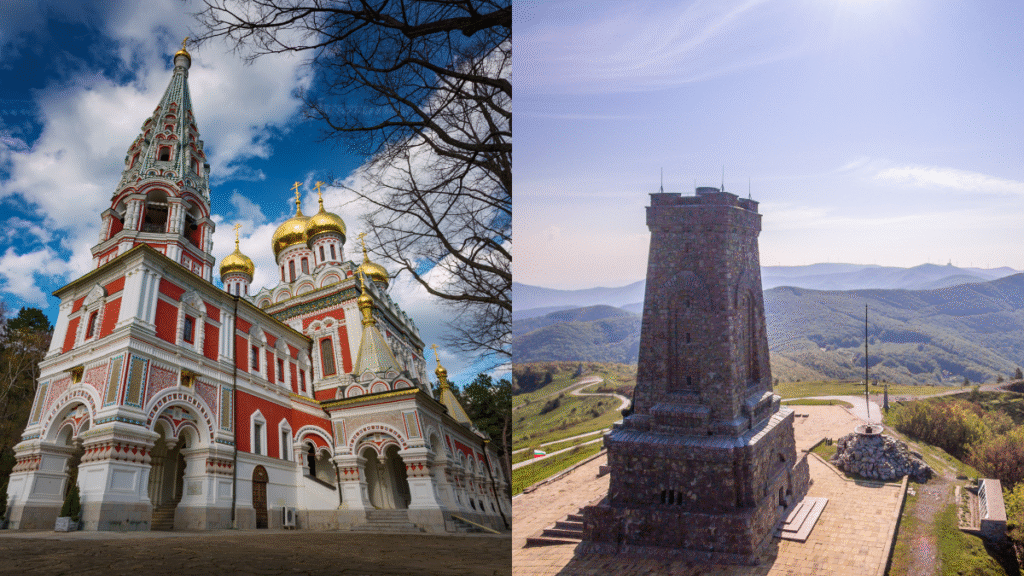
Buzludzha Monument
The legendary UFO-shaped communist monument sits on a nearby peak, abandoned yet fascinating. You can’t officially enter, but the outside alone is surreal and photogenic. Reaching it requires a car (around 30 minutes from Shipka Pass) and good weather, as the road can be rough. Bring a jacket – even in summer, it’s windy up there.

The Black Sea Coast
From lively party towns to peaceful fishing villages, Bulgaria’s Black Sea coast has something for everyone. Whether you’re into beach bars, romantic sunsets, or seafood feasts, this is one of the best regions to slow down and enjoy summer life.
👉 Best tips: The north is more modern (Varna area), the south is more charming and traditional. You can fly directly into Varna or Burgas, rent a car, or travel by train/bus from Sofia. June and September are perfect – fewer crowds and lower prices.
Varna & Golden Sands (North Coast)
Varna is Bulgaria’s “sea capital” – a lively city with beaches, the Sea Garden park, Roman Baths, and great nightlife. It’s a fantastic base to explore the north coast, with Golden Sands Resort just 20 minutes away by bus or taxi.
The city has its own airport and plenty of affordable stays near the beach or city center. Spend 2–3 days here if you want to mix sightseeing with beach time.
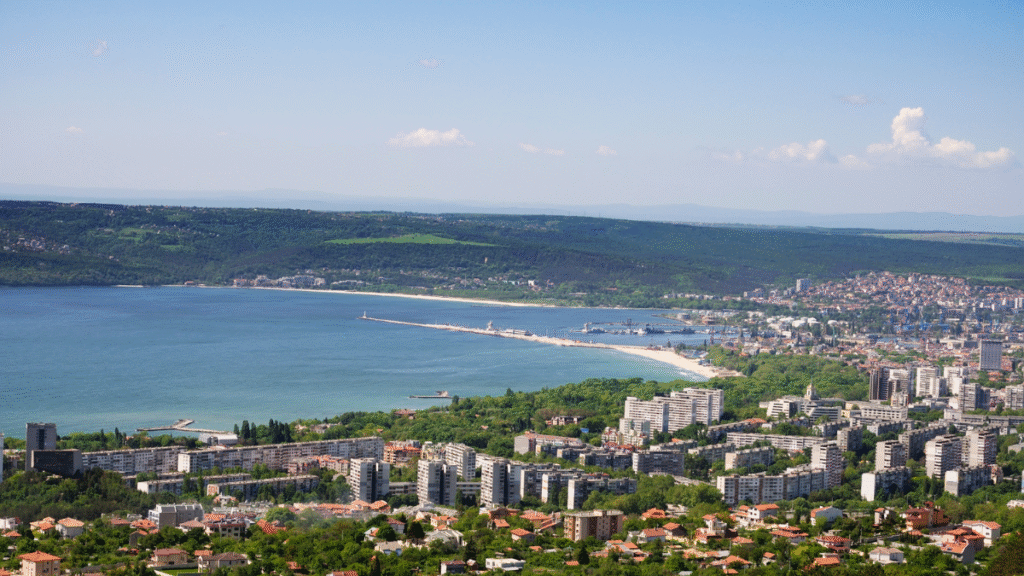
Burgas, Nessebar & Sozopol (South Coast)
Burgas is quieter but full of charm – its long seaside park, clean beaches, and good restaurants make it perfect for couples or families.
From Burgas, buses or boats can take you to Nessebar, a UNESCO town on a tiny peninsula full of ancient churches and cute cafés, or to Sozopol, known for its sunsets and seafood.
If you want nightlife, Sunny Beach is nearby, while Sinemorets and Ahtopol further south are peaceful, authentic gems.
You can fly into Burgas Airport or take a 6–7-hour bus from Sofia. Spend at least 4–5 days to explore the coast properly.
👉 Local tip: Parking along the coast can get busy in July and August – book accommodation with parking included if you’re renting a car.



Natural Wonders of Bulgaria
This is where Bulgaria truly shines – untouched landscapes, mystical caves, and mountain views that feel endless. If you love nature, this region will easily steal your heart.
👉 Best tips: A car is essential to reach most places, as public transport is limited. Bring cash, water, and comfortable shoes. Summer and early autumn (June–September) are the best months to explore.
Belogradchik Rocks
Tucked in northwest Bulgaria, the Belogradchik Rocks look like something from another planet – huge stone figures scattered across the hills. The ancient Belogradchik Fortress built into the rocks is a must-visit.
You can reach it by car from Sofia in about 3 hours, or take a train to Vidin and continue by bus. Plan at least one night nearby to catch sunset or sunrise – the colors are incredible.
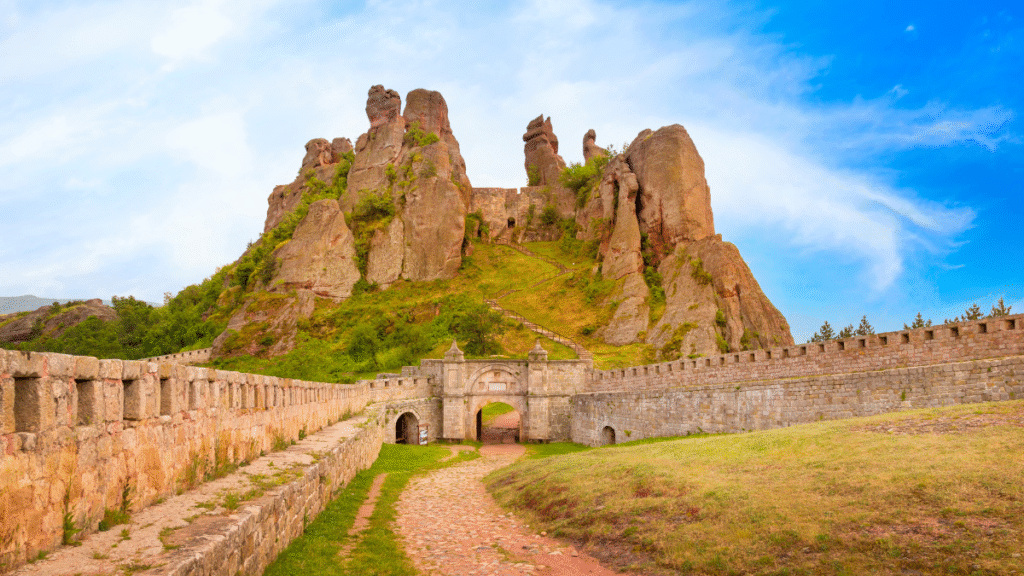
Devetashka Cave & Krushuna Waterfalls
These two natural sights are close to each other, near the town of Lovech (around 2.5 hours from Sofia).
Devetashka Cave is enormous, with sunlight streaming through natural skylights – it even appeared in The Expendables 2 movie.
A short drive away, Krushuna Waterfalls form turquoise cascades that feel straight out of a fairy tale. Stay overnight in Lovech or Krushuna village to see both at a relaxed pace.


Prohodna Cave (Eyes of God)
Located near Karlukovo, about 1.5 hours from Sofia, this cave is famous for its two natural openings that look exactly like eyes staring from the ceiling. It’s easy to access by car or with a short hike from the parking area.
You can visit it as a day trip from Sofia or combine it with the Devetashka/Krushuna route. Don’t forget a flashlight – it’s dark inside!
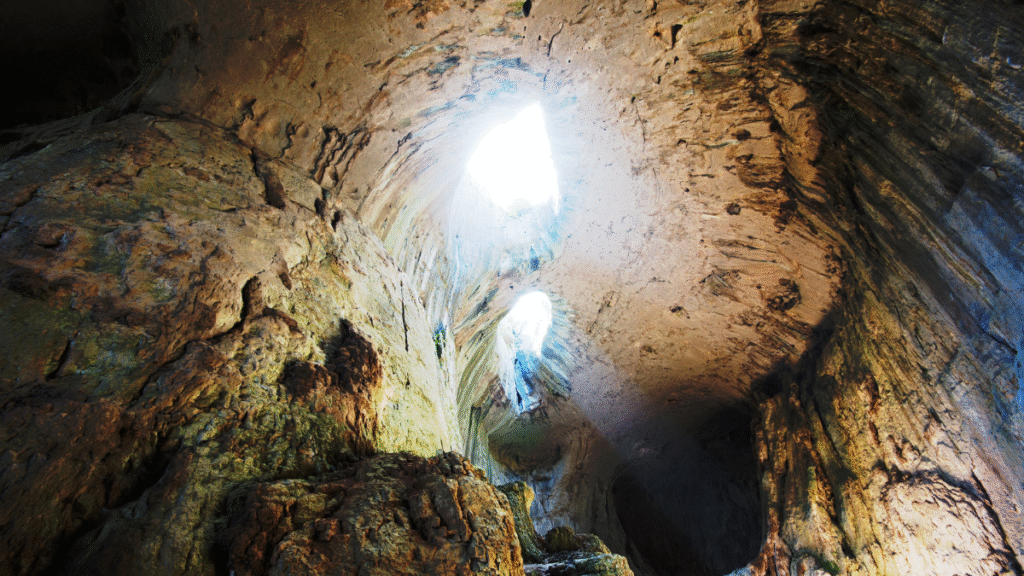
Pirin National Park & Musala Peak
Pirin, near Bansko, is one of Bulgaria’s most beautiful mountain regions with clear lakes and hiking trails.
The nearby Rila National Park is home to Musala Peak, the highest in the Balkans (2,925 m). The hike starts from Borovets – take the gondola halfway up, then continue on foot. Both parks are best explored between June and September. Stay in Bansko for Pirin and in Borovets for Musala.
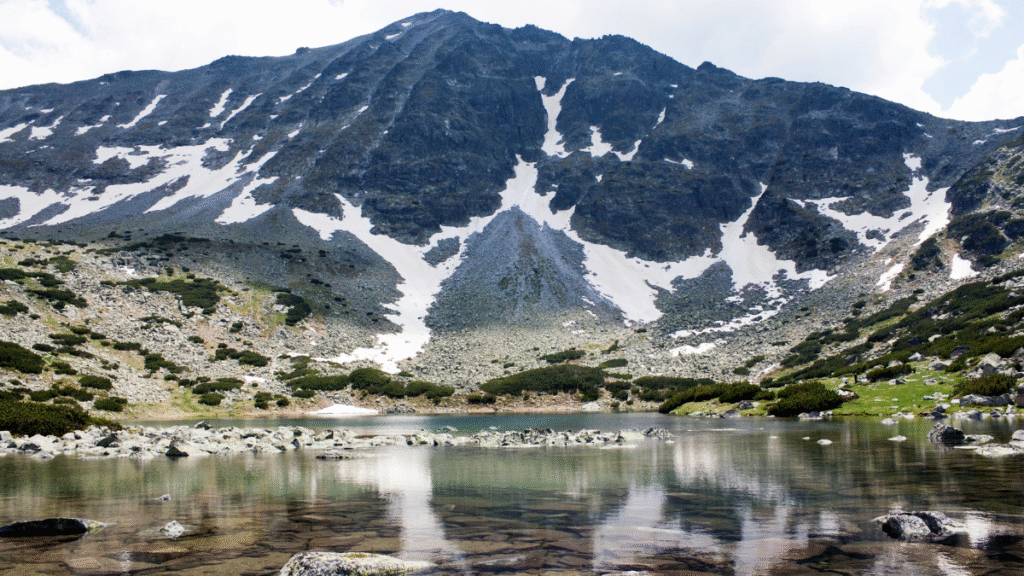
Rhodope Mountains
The Rhodopes are pure magic – rolling green hills, folklore, and villages like Shiroka Laka or Kovachevitsa where time stands still. You’ll find caves, waterfalls, and the mythical Orpheus’ birthplace.
Base yourself in Devin (for spas and waterfalls) or Smolyan (for hiking). Spend at least 3-4 days here to feel the peaceful vibe.
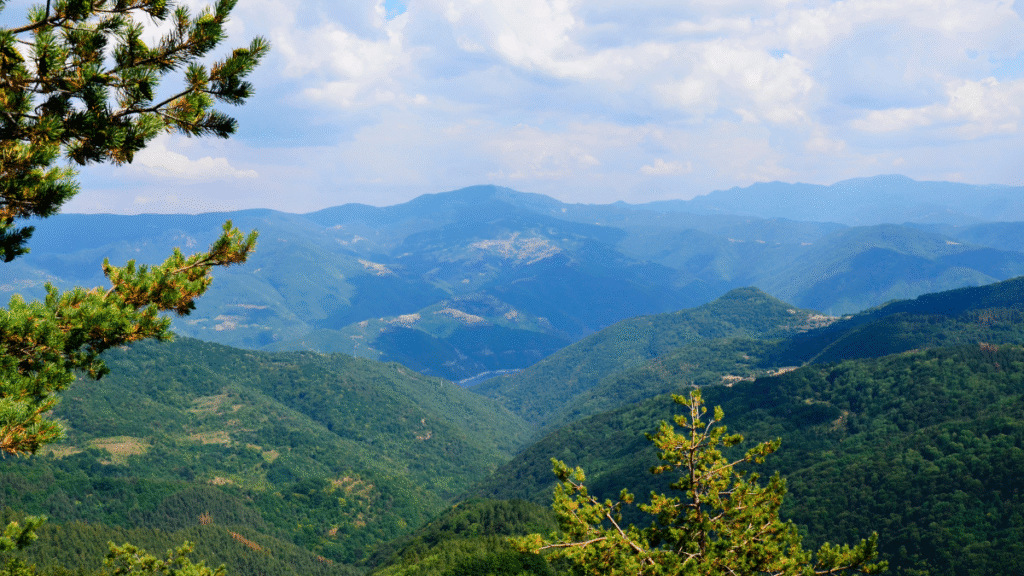
Ski Resorts in Bulgaria
Winter brings a completely different charm to Bulgaria – cozy mountain towns, steaming mulled wine, and powdery slopes at a fraction of Alpine prices.
👉 Best tips: Ski season runs from December to March. The easiest access is from Sofia, and rentals are very affordable. Don’t forget warm layers – it can get below -10°C in the mornings!
Bansko
Bulgaria’s top ski resort, located about 2 hours from Sofia. It has modern lifts, good snow, and plenty of bars and restaurants. The old town is charming too, with stone houses and cozy taverns. If you’re driving, parking is easy, and ski rentals are super affordable.
Borovets
Only 1.5 hours from Sofia, Borovets is the easiest ski resort to reach – great for families and short winter breaks. You can stay right by the slopes and enjoy night skiing or spa hotels. It’s small but lively and ideal for beginners.
Pamporovo
Located deep in the Rhodope Mountains, Pamporovo is famous for its sunshine and friendly vibe. The slopes are less crowded, making it perfect for a relaxed ski holiday. The best way to reach it is by car from Plovdiv (around 3 hours).



Wine & Spa Escapes
If you’re after slower travel and relaxation, this is your zone. Bulgaria’s wine and spa towns combine culture, history, and a glass (or two) of amazing local wine — all without breaking the bank.
👉 Best tips: You can visit all these towns by car within 2–3 hours of Sofia. Try local wine shops for great prices, and always check if your spa hotel offers mineral pools – must do!
If you’re wondering what to eat while exploring all these amazing places, don’t miss our guide on The Best Food in Bulgaria: A Local’s Guide to What to Eat and Love.
Melnik
Melnik is Bulgaria’s smallest town, hidden among dramatic sandstone pyramids. It’s famous for its red wine and charming stone houses.
Visit the Kordopulov House, one of the largest 18th-century homes in Bulgaria, and enjoy a tasting at one of the local wineries.
The town is best reached by car (2.5–3 hours from Sofia), and one night is enough for a full experience.
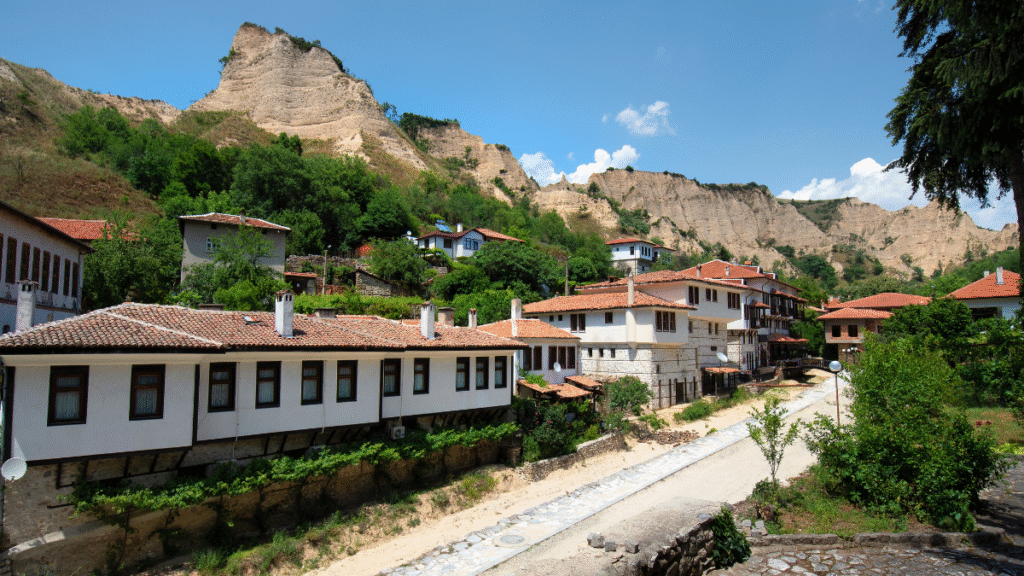
Plovdiv Wine Region
The Thracian Valley around Plovdiv is one of Europe’s oldest wine regions. You can visit wineries like Bendida or Todoroff for tours and tastings.
Stay in Plovdiv – a city full of Roman ruins, art streets, and cafés – and explore the wine country by car or taxi. Spend 2–3 nights here for the perfect mix of culture and wine.
Velingrad & Hisarya
Both towns are known for their thermal springs and spa hotels. Velingrad, often called the spa capital of Bulgaria, has over 80 mineral springs and luxury hotels surrounded by mountains.
Hisarya, on the other hand, mixes Roman ruins with modern spa resorts – great for a calm weekend. You can reach both by car or train from Sofia in about 2-3 hours.
Final Thoughts: The Best Things to Do in Bulgaria
Bulgaria may be small, but it’s packed with variety. If you want the full experience, spend:
- 2–3 days in Sofia + day trips,
- 2–3 days in Veliko Tarnovo (history),
- 4–5 days on the Black Sea coast,
- and a few extra days in the mountains or wine regions.
If you’re short on time and want everything planned out, check out our detailed 7 to 10 Days Itinerary in Bulgaria (2025) – it’s the perfect guide to see the best of the country without the stress of planning.
From beaches to mountains, fortresses to caves, there are endless things to do in Bulgaria – and no matter where you go, you’ll find warm people, delicious food, and unforgettable landscapes.

